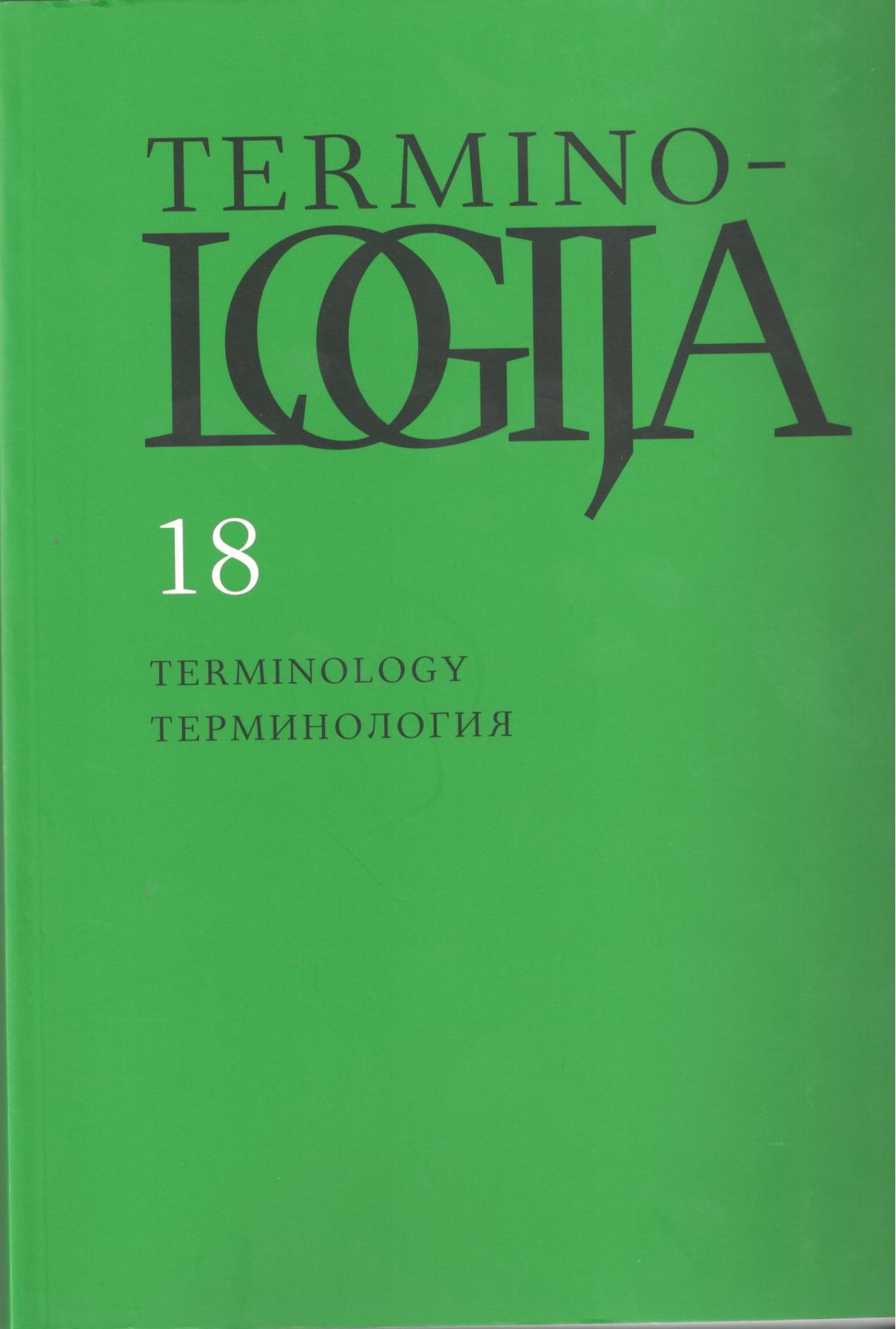Gyvenamojo namo ir pagrindinių jo dalių rūšiniai liaudies terminai
Specific folk terms naming the dwelling house and its main parts
Author(s): Robertas StunžinasSubject(s): Language and Literature Studies, Lexis, Semantics, Descriptive linguistics, Baltic Languages, Philology
Published by: Lietuvių Kalbos Institutas
Keywords: specific folk terms of building; dwelling house; Lithuanian terms; borrowings; hybrids;
Summary/Abstract: This article deals with the microsystem of terms naming the dwelling house and its main parts. Specific terms are analyzed according to named concepts, relations and origin.In the researched material there were 248 generic and specific terms. 69 terms are generic and name the dwelling house, its rooms and constructions: foundation, floor, roof, window and door. These terms have hyponymical relation to 175 specific terms naming concepts according to various features, for instance, namas ‘dwelling house’, molinalė ‘clay house’, rūmas ‘good-looking house’, grindys ‘floor’, juodgrindės ‘plain base floor’; dangtis ‘roof’, xstriekas ‘straw roof’. 34 terms are specific and generic at the same time and have 4 of their own hyponyms: xkamara ‘pantry’, patalpa ‘room’, xmėskamarė ‘food pantry’.Most often specific terms indicate purpose, for instance patalpa ‘inside of a house’, kampas ‘living room’, xkamara ‘guest room’, valgykla ‘dining room’. Specific terms that name concepts according to characteristics of construction, value and quality or size and place, comprise similar sized groups, for instance namas ‘dwelling house’, krėstinė ‘clay house’, gryčia ‘poor house’, xstadala ‘large house’, pamatas ‘bottom part of a building’, pamatas ‘stone foundation’; durys ‘door’, durelės ‘back door’. Specific terms indicating age are very rare: sentrobė ‘old house’.The hierarchy of genus-species related terms is simple; only 34 terms have hyperonyms and hyponyms.According to origin the majority of specific terms are Lithuanian words, for instance asla, pirtikė, prieangis, priešinė, trobesikė, trobukas. Slavic and German loans are rather rare, for instance xkalupka (Pol. chałupa), xkaminyčia (Pol. kamienica), xkuknė (Bel. кухня, 1. kuchnia); bakūžė (Germ. dial, backhus), xstubos (Germ. dial, stuba); grytelė (hybr., Bel. грыднiца), xstubelė (hybr., Germ. dial, stuba), xužkakalė (hybr., Germ. Kachel). The origin of generic and specific terms is quite similar. The majority of specific terms are related by synonymic relations.
Journal: Terminologija
- Issue Year: 2011
- Issue No: 18
- Page Range: 142-153
- Page Count: 12
- Language: Lithuanian

